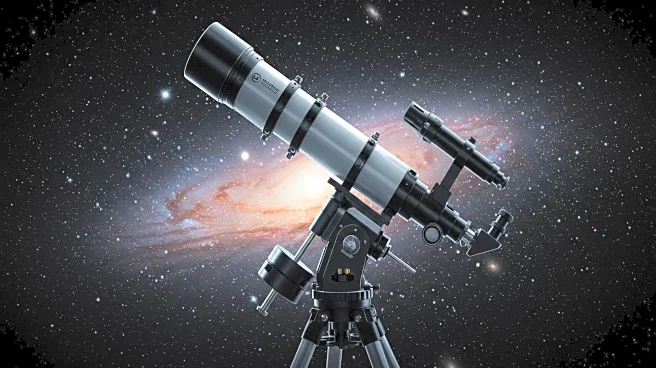What's Happening?
Astronomers using the James Webb Space Telescope have discovered over a dozen dormant galaxies that ceased star formation within the first billion years after the Big Bang. These galaxies, found in the early universe, provide insights into the evolution of galaxies and the factors that halt star formation. The presence of supermassive black holes and stellar feedback are among the reasons these galaxies may become inactive. The discovery challenges previous assumptions that early galaxies should be actively forming stars.
Why It's Important?
The findings from the James Webb Telescope offer a new perspective on galaxy evolution, particularly in the early universe. Understanding why galaxies become dormant can reveal the processes that influence star formation and the lifecycle of galaxies. This research could lead to a deeper comprehension of cosmic phenomena and the role of black holes and stellar feedback in shaping galaxies. The discovery also underscores the capabilities of the James Webb Telescope in advancing astronomical research.
What's Next?
Future observations and programs, such as the 'Sleeping Beauties' initiative, will focus on identifying more dormant galaxies and understanding their star formation cycles. These efforts aim to determine how long galaxies remain inactive and the factors that trigger their dormancy. Continued research will help unravel the mysteries of galaxy evolution and contribute to the broader understanding of the universe's history.












